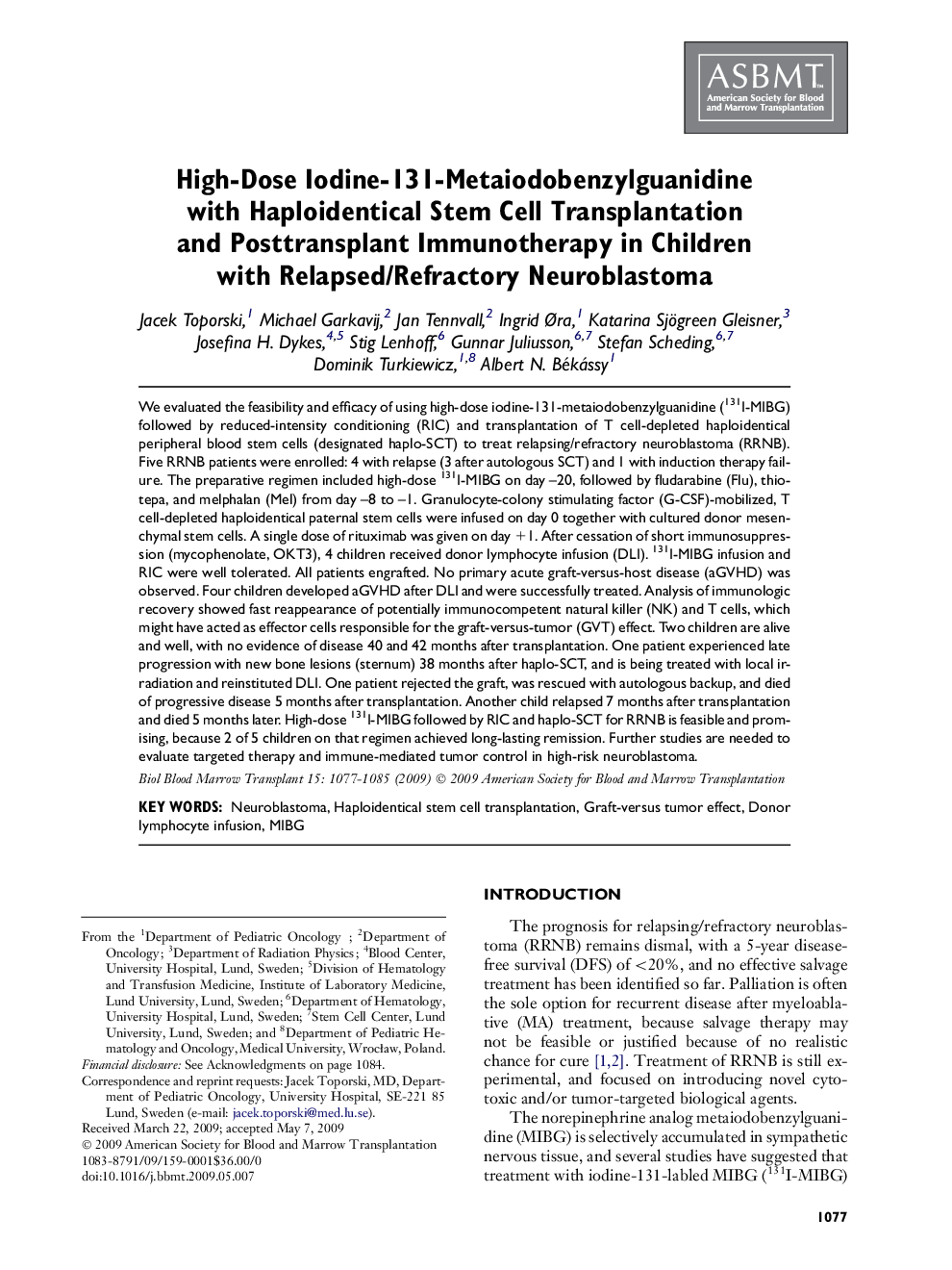| کد مقاله | کد نشریه | سال انتشار | مقاله انگلیسی | نسخه تمام متن |
|---|---|---|---|---|
| 2103068 | 1546345 | 2009 | 9 صفحه PDF | دانلود رایگان |

We evaluated the feasibility and efficacy of using high-dose iodine-131-metaiodobenzylguanidine (131I-MIBG) followed by reduced-intensity conditioning (RIC) and transplantation of T cell-depleted haploidentical peripheral blood stem cells (designated haplo-SCT) to treat relapsing/refractory neuroblastoma (RRNB). Five RRNB patients were enrolled: 4 with relapse (3 after autologous SCT) and 1 with induction therapy failure. The preparative regimen included high-dose 131I-MIBG on day –20, followed by fludarabine (Flu), thiotepa, and melphalan (Mel) from day –8 to –1. Granulocyte-colony stimulating factor (G-CSF)-mobilized, T cell-depleted haploidentical paternal stem cells were infused on day 0 together with cultured donor mesenchymal stem cells. A single dose of rituximab was given on day +1. After cessation of short immunosuppression (mycophenolate, OKT3), 4 children received donor lymphocyte infusion (DLI). 131I-MIBG infusion and RIC were well tolerated. All patients engrafted. No primary acute graft-versus-host disease (aGVHD) was observed. Four children developed aGVHD after DLI and were successfully treated. Analysis of immunologic recovery showed fast reappearance of potentially immunocompetent natural killer (NK) and T cells, which might have acted as effector cells responsible for the graft-versus-tumor (GVT) effect. Two children are alive and well, with no evidence of disease 40 and 42 months after transplantation. One patient experienced late progression with new bone lesions (sternum) 38 months after haplo-SCT, and is being treated with local irradiation and reinstituted DLI. One patient rejected the graft, was rescued with autologous backup, and died of progressive disease 5 months after transplantation. Another child relapsed 7 months after transplantation and died 5 months later. High-dose 131I-MIBG followed by RIC and haplo-SCT for RRNB is feasible and promising, because 2 of 5 children on that regimen achieved long-lasting remission. Further studies are needed to evaluate targeted therapy and immune-mediated tumor control in high-risk neuroblastoma.
Journal: - Volume 15, Issue 9, September 2009, Pages 1077–1085